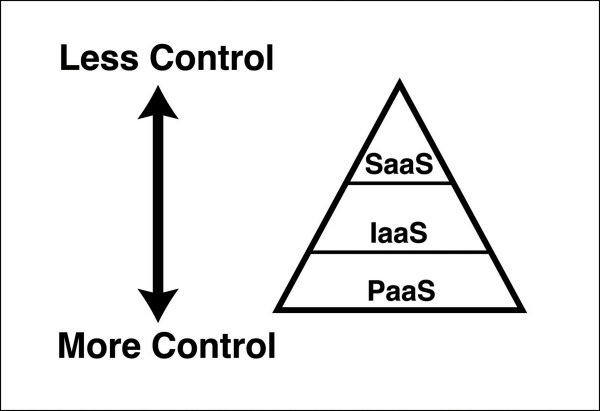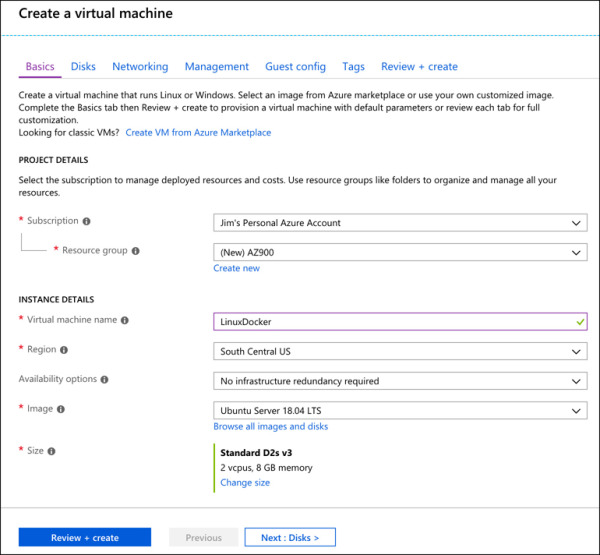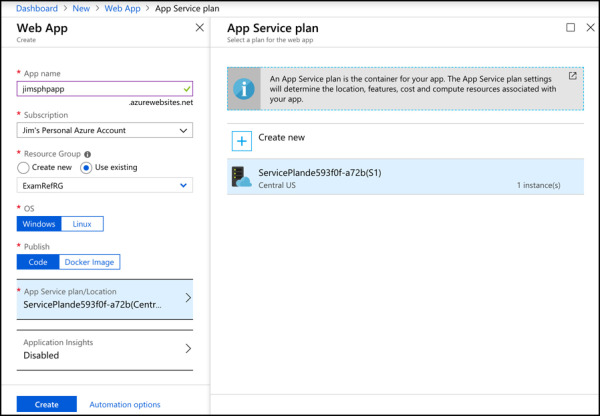Understand cloud concepts
- By Jim Cheshire
- 6/21/2019
- Skill 1.1: Describe the benefits and considerations of using cloud services
- Skill 1.2: Describe the differences between Infrastructure-as-a-Service (IaaS), Platform-as-a-Service (PaaS), and Software-as-a-Service (SaaS)
Skill 1.2: Describe the differences between Infrastructure-as-a-Service (IaaS), Platform-as-a-Service (PaaS), and Software-as-a-Service (SaaS)
As you’ve learned, one of the benefits of moving to the cloud is that you offload some of the responsibility of your infrastructure to the cloud provider. Moving to the cloud, however, is not an all-or-nothing kind of thing. When you’re evaluating your use of the cloud, you need to balance your need for controlling resources against the convenience of allowing the cloud provider to handle things for you.
Offerings in the cloud are typically referred to as services, and in this skill section, we’re going to discuss the three primary types of cloud services: Infrastructure-as-a-Service (IaaS), Platform-as-a-Service (PaaS), and Software-as-a-Service (SaaS). Each type of service comes with advantages and disadvantages, and the easiest way to visualize them is by using the cloud pyramid as shown in Figure 1-2. The bottom of the cloud pyramid represents the greatest amount of control over your resources, but it also represents the greatest amount of responsibility on your part. The top of the pyramid represents the least amount of control, but also the least amount of responsibility.

Figure 1-2 The cloud pyramid
Infrastructure-as-a-Service (IaaS)
Infrastructure refers to the hardware that your application uses, and IaaS refers to the virtualized infrastructure offered by a cloud provider. When you create an IaaS resource, the cloud provider allocates a VM for your use. In some cases, the cloud provider might do the basic operating system install for you. In other situations, you may need to install the operating system yourself. In either case, you are responsible for installing other necessary services and your application.
Because you control the operating system install and installation of other services, IaaS gives you plenty of control over your cloud resources. However, it also means that you are responsible for making sure your operating system is patched with security updates, and if something goes wrong in the operating system, you’re responsible for troubleshooting it. The cloud provider is only responsible for providing the VM. You do, however, benefit from the underlying infrastructure in the area of fault tolerance and disaster recovery that we discussed earlier.
In Figure 1-3, you see an IaaS VM in the Azure portal. The Ubuntu Server, a Linux operating system, has been chosen for the VM. Once the VM is up and running, it will be using Ubuntu Server 18.04. Unless an updated is installed, it will always be running that version. Microsoft will never install patches or version updates for me.

Figure 1-3 Creating an IaaS VM in Azure
Once you have an IaaS VM running in the cloud, you gain access to many services the cloud provider offers. For example, Microsoft offers Azure Security Center to ensure the security of your IaaS VMs, Azure Backup to make backing up data easy, Azure Log Analytics to help with troubleshooting any problems you might have, and much more.
IaaS services allow you to control costs effectively, because you only pay for them when you are using them. If you stop your IaaS VM, your billing stops for the resource. This makes IaaS an ideal choice if you need developers to have a platform for testing an application during release. Developers can start an IaaS VM, test the application as a team, and then stop the IaaS VM when testing is complete.
Another popular use of IaaS is when you need one or more powerful VMs for a temporary period. For example, you might need to analyze a large amount of data for a project. By utilizing IaaS VMs for your project, you can keep costs to a minimum, create resources quickly as you need them, and gain all the processing power you need.
IaaS services benefit from scaling and elasticity that we discussed earlier. If you need more VMs, you can scale out to accommodate that and then scale in when those resources are no longer needed. If you need more CPU power, more memory, or more disk space, you can quickly scale up to gain those benefits and then scale down when they’re no longer needed.
In a nutshell, IaaS services are a great choice if you want to let someone else manage the hardware infrastructure (which can include both the computers and the network) related to your application, but you want to maintain control of what’s installed in the operating system. In an IaaS environment, the cloud provider isn’t going to install something on the operating system for you, so the current state of what’s installed on your VMs is always known to you. If this is important for your particular needs, IaaS may be the right choice for you. IaaS is also a great choice if you occasionally need high-end VMs for specific needs.
IaaS is also a great choice if you want your application and configuration in the cloud, but you want the option of not paying for it when you aren’t using it. By stopping your VM, you can avoid the costs associated with it, and when you need to use your application again, you can simply start your VM and pick up right where you left off.
Platform-as-a-Service (PaaS)
In a PaaS environment, a cloud provider still provides the infrastructure for you, but they also provide the operating system, software installed in the operating system to help you connect to databases and network systems (often referred to as middleware), and many features that enable you to build and manage complex cloud applications.
PaaS sits right in the middle of the cloud pyramid. PaaS services offer you the flexibility of controlling the application, but they offload management and control of the underlying systems to the cloud provider. If you are deploying your own application to the cloud and you want to minimize your management investment, a PaaS service is often the best choice.
Suppose you need to run a web application that uses the PHP framework to connect to a back-end database system. If you were to choose IaaS for your application, you’d need to ensure that you install and configure PHP on your VM. You’d then need to install and configure the software necessary to connect to your back-end database. In a PaaS scenario, you simply deploy your web application to the cloud provider, and everything else is taken care of for you.
In Figure 1-4, we have a web application in Azure App Service, one of the PaaS offerings in Azure. It has been created on a VM that’s maintained by Microsoft. Notice the option of choosing either Linux or Windows, but the operating system is still managed by Microsoft. We also have the option of enabling Application Insights, a service in Azure that provides deep insight into how an application is performing, making it easier to troubleshoot problems if they occur.

Figure 1-4 Creating a Web App in Azure App Service
One more interesting thing in Figure 1-4 is the option to publish either your code or a Docker image. Docker is a technology that makes it easy to package your application and the components that it requires into a container that you can then deploy and run on another computer in another environment, as long as that computer has Docker installed on it. In Azure App Service, I don’t have to worry about Docker installation or configuration. It’s automatically included on all App Service VMs as part of Microsoft’s PaaS offering, and it’s completely managed and maintained by Microsoft.
In a PaaS offering, cloud providers offer numerous application frameworks such as PHP, Node.js, ASP.NET, .NET Core, Java, Python, and more. The cloud provider usually provides multiple versions of each framework so you can choose a version that you know is compatible with your application. The cloud provider will also ensure that common components necessary for data connectivity from your application to other systems is installed and configured. That usually means that your application code works without you having to do any kind of complex configuration. In fact, this is one of the main benefits of using a PaaS service; you can often move your application from on-premises to a cloud environment by simply deploying it to the cloud. This concept is often referred to as lift-and-shift.
Because the cloud provider controls the operating system and what’s installed on the VM, they can provide additional capabilities to you by adding their own features. For example, suppose you want to add a log-in feature to your web application, and you want to allow users to log in with a Microsoft account, a Facebook account, or a Google account. If you wanted to add this capability on-premises, or in an IaaS environment, you need some developers to build it for you, a task that isn’t easy and one that requires specialized knowledge. You’d have to either have developers in your company who already have those skills, or you’d have to hire them. However, cloud providers often offer features like this in their PaaS services, and enabling them is as easy as flipping a switch and doing some minor configuration specific to your app.
A PaaS service also benefits from all of the other enhancements offered by the cloud; you get fault tolerance, elasticity, easy and quick scaling, backup and disaster recovery features, and more. In fact, features such as backing up and restoring data are oftentimes more user-friendly and feature-rich in a PaaS environment because the cloud provider installs customized software on the PaaS VMs to add functionality.
As you can see, there are real benefits to allowing the cloud provider to control what’s installed on the VMs running your application, but there can also be drawbacks. For example, the cloud provider controls when patches and updates are applied to both the operating system and to other components installed on the VMs. You’ll usually be given advance notice of major changes so that you can test your application on-premises first and avoid any downtime, but you do lose the flexibility and control of deciding when to update the VM.
Software-as-a-Service (SaaS)
As you’ve learned, IaaS requires you to control both the operating system and middleware components along with your application. When you move to PaaS, you offload the control of the operating system and middleware components to the cloud provider, and you’re responsible only for your application code. As you move to the top of the cloud pyramid and into the SaaS realm, the cloud provider controls everything. In other words, a SaaS service is software provided by a cloud provider that’s installed on infrastructure completely controlled by the hosting provider.
SaaS services offer you the flexibility of a pay-as-you-go model. Essentially, you rent your software from a service provider. Users of the software usually access the software from a web browser, but they may also install applications that will only work as long as you are paying for the SaaS service. One huge benefit of web-based software is that it works from just about any device, including smart phones. Because of that, SaaS services enable connectivity and productivity for field staff using devices they already own.
When using a SaaS service, not only do you benefit from using software written and maintained by someone else, but you can also benefit from allowing the cloud provider to maintain and configure the application. For example, if your company offers corporate email, you can choose to use Microsoft’s Office 365 SaaS service. By using the Exchange Online service in Office 365, you can take advantage of enterprise-ready email solutions without having to hire IT staff and build infrastructure to support it. Instead, Microsoft maintains the system for you. Not only do you benefit from the flexibility and reliability of the cloud, but you can also rest easy knowing that Microsoft is ensuring your Exchange services are always available to your users.
SaaS services aren’t just for the enterprise. In fact, most people use SaaS services all the time without even realizing it. If you use Hotmail or Gmail or another online email service, you’re using a SaaS service. The cloud provider hosts the email software in the cloud, and you log in and use that software using your web browser. You don’t have to know anything about the software. The cloud provider can offer new features with software updates, and those new features are available to you automatically without any action on your part. If the cloud provider finds a problem with the software, they can resolve it with a patch without you even realizing anything happened.
Comparing service types
We’ve already discussed some of the advantages and disadvantages of each type of cloud service, and the cloud pyramid provides a visual representation of how types of cloud services differ related to your responsibility and what you can control. In order to solidify these concepts, let’s look at a comparison of each service type.
As you’ve learned, IaaS provides you with the greatest flexibility. You can install your own software and your own components, and you control when the software and operating system are updated. An additional benefit is that you pay for your resources only when they’re being used, so IaaS has the ability to reduce your operational expenses. Even though you can save costs by turning off VMs you aren’t using, the higher costs associated with installing and maintaining your VMs might offset that benefit.
PaaS services offer you some of the same flexibility of IaaS services without the need to manage the infrastructure. In a PaaS service, you are responsible only for the application that’s installed in the cloud. This can be your own application, or an application developed by someone else (for example, a WordPress system or an e-commerce solution), but in either case, you are responsible for the application. PaaS services are popular for developer teams who are looking to move on-premises applications to the cloud easily and quickly, and they typically offer many different deployment options to make that as easy as possible. PaaS services also offer more features than IaaS services, because the cloud provider installs their own software and features on the platform. Any application running in a PaaS service, however, can be impacted by updates and version changes in the underlying software, and that can mean increased costs associated with testing an application before the cloud provider rolls out changes.
SaaS services are quite a bit different than IaaS or PaaS services because they are completely managed and maintained by the cloud provider. You don’t have the option of installing any of your own software with a SaaS service, so the deciding factor is related entirely to whether or not the provided-software meets your needs. The benefit of a SaaS service is that it largely removes the IT burden from your company, and it enables everyone in your company to access the software on multiple devices from just about anywhere Internet access is available. You also benefit from data backup that the cloud provider includes in their infrastructure. If you have a need to customize the application or have any control over its configuration, however, SaaS may not be a good choice for you.
